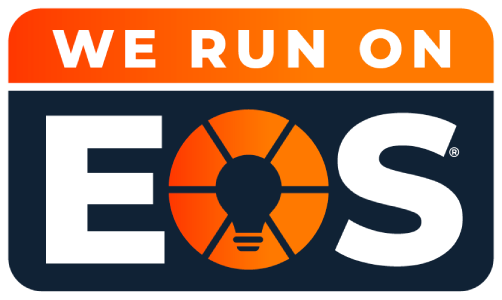You’ve hired a new team member—that’s great news! Next comes a critical phase: onboarding. This process will get your new hires up to speed, integrate them into your team and company culture, and ensure they’ll stay with you for the long haul.
Studies show that companies with solid onboarding programs often boost their employee retention rates by an impressive 82%. Also, effective onboarding can supercharge employee performance, job satisfaction, and alignment with company culture and values.
Need help figuring out where to start or how to improve your onboarding process? We’ll walk you through what you need to know to ensure your new hires feel welcomed, supported, and prepared to excel in their new role.
Overview of an Effective Onboarding Process for New Hires
From the moment a new hire accepts a job offer to their first few months at the company, a well-thought-out onboarding process can make all the difference. Keep reading as we take you through the crucial steps and provide you with helpful tips for creating a successful onboarding process.
Pre-Onboarding Preparation
It’s important to lay the groundwork ahead of time to implement a smooth and seamless transition for new hires. Having an established onboarding process provides a consistent framework that everyone can refer to throughout the first days, weeks, and months. This helps keep everyone on the same page and reinforces the company culture you’ve worked so hard to create.
To ensure the new hire and your team synchronize sooner, identify all stakeholders crucial in the onboarding process. These could be managers, mentors, and HR personnel. Clearly outline everyone’s expectations for the upcoming onboarding journey. Also, prepare all necessary resources and materials for new hires, from access to tools and software to training materials and company policies. A prepared handout, employee handbook, or welcome kit can go a long way toward making this part more efficient.

Making a Great Impression, Day One
The first day at a new job can be nerve-wracking for anyone. Help set the tone for a successful onboarding experience by creating a warm and welcoming experience with the following actions.
- Have a designated onboarding buddy or mentor to show the new hire around and answer their questions.
- Introduce the new hire to team members and other stakeholders to help them feel like part of the team.
- Provide an overview of the company culture, values, and vision to help them understand what the organization stands for and what it expects from them.
Building a Solid Foundation
Create a structured onboarding schedule for every new hire’s first month, during which you train new employees on all the relevant tools, systems, and processes inherent to their role. Try to provide clear goals and expectations for the new hire and their day-to-day activities. Give them a clear roadmap to follow to avoid misunderstanding. Finally, be sure to schedule regular feedback sessions to address challenges or questions that may arise along the way.
Don’t Overwhelm
Avoid the temptation to provide all the new information at once. Pacing the onboarding process is essential to prevent overwhelming new hires. Break down the training into manageable segments, focusing on foundational knowledge before delving into more intricate details. This ensures that each piece of information is absorbed and understood before moving to the next.
Organize information into digestible and interactive modules. Use multimedia formats, such as videos, infographics, and interactive presentations, to make the content more engaging. This not only aids in better retention but also caters to different learning styles, ensuring that the onboarding process is inclusive and effective for all new hires.
How to Execute Remote Onboarding
In the era of remote work, adapting the onboarding process for new hires working from afar is a real concern. Remote onboarding requires a thoughtful approach to ensure that new team members not only acclimate to their roles but also feel a strong connection to the company and their colleagues. It can be easy to feel distant from colleagues you’ve never physically met, so you need to take extra care to make a remote hire feel included.
While the core principles of effective onboarding remain consistent, the approach can vary significantly between on-site and digital roles. Understanding these distinctions, you can tailor the onboarding experience to meet the specific needs of each work environment.
- Virtual Workspace Familiarization
In contrast to physical orientation, remote onboarding places a strong emphasis on familiarizing new hires with virtual workspaces. This includes training on digital collaboration tools, project management platforms, and communication channels specific to remote work.
- Online Team Introductions
Rather than face-to-face interactions, remote onboarding relies on online team introductions through video conferencing or virtual team-building sessions. Building rapport occurs in a virtual space, requiring intentional efforts to recreate the personal connection found in on-site environments.
- Remote Collaboration Training
Remote onboarding prioritizes training on effective remote collaboration. This involves teaching new hires how to navigate virtual meetings, communicate, and leverage digital tools for seamless collaboration with team members across different locations.
- Virtual Social Integration
Team-building activities and social integration will have to occur virtually. Online team events, virtual coffee breaks, and digital icebreakers become essential components of building team camaraderie, compensating for the lack of in-person interactions.
Create opportunities for remote team engagement through virtual team-building activities, online collaboration tools, and regular video meetings. Encourage open communication channels and create a virtual space for casual interactions to strengthen team bonds. Let the new hire know that they can ask questions and hang out, just like they can in an on-site office.
- Digital Welcome Kits
Create comprehensive digital welcome kits that provide new hires with all the resources they need to get started. This could include an electronic employee handbook, training materials, access credentials, and an introduction to the company’s digital communication platforms. A well-curated welcome kit ensures that remote employees have easy access to essential information from the beginning.
- Tech Troubleshooting Skills
Given the nature of remote work, remote onboarding should include training new hires to troubleshoot common technical issues. This may involve educating them on troubleshooting software, and connectivity problems, and effectively contacting technical support.
Understanding these differences allows organizations to craft onboarding experiences that align with the specific dynamics of on-site or digital roles. Recognizing the unique needs of each context enables a more tailored and effective onboarding process for all new hires.
Use Continued Support to Engage New Hires

Facilitate opportunities for new hires to shadow experienced employees in similar roles. This hands-on approach allows for practical exposure and a firsthand understanding of the day-to-day responsibilities associated with a specific position. Job shadowing fosters a quicker integration into the role and promotes a sense of confidence.
Innovative Learning Methods
Utilize interactive learning platforms or Learning Management Systems (LMS) that allow for modular and self-paced learning. These platforms can track progress, provide quizzes for understanding, and offer a structured path for new hires to follow. Interactive elements make the learning process more engaging and encourage active participation.
- Integrating into Company Culture
Whether onboarding is occurring on-site or virtually, the first few weeks after the employee joins your company are critical. Encourage participation in team meetings and projects to help new hires settle in and thrive. Make sure your new hire has the opportunity to make friends and network, because building relationships will help them feel part of the team.
The mentor or buddy you assigned to your new hire should check in during this period to offer guidance and act as a go-to person for any questions or concerns. As you go, gather feedback from your new employee on the onboarding process. This will allow you to make adjustments to ensure future new hires receive the support they need to succeed.
Complete the Onboarding Process by Setting New Goals
As you wrap up the onboarding process, encourage your new hire to take some time and reflect on their experiences so far. Request feedback on their progress over the last couple of months and ask them to identify areas where further development and training may help them excel in their role. Then, collaboratively set new goals and expectations for the next phase of the new hire’s transition to ensure they continue on their path to success.
- Avoid Unrealistic Timeframes
Set realistic onboarding timelines that align with the complexity of the role. Avoid overwhelming new hires with too much to do at once. Break down the onboarding schedule into manageable phases, ensuring that each phase is completed thoroughly before moving on to the next.
You can also extend the onboarding process beyond the initial weeks. Schedule regular follow-up sessions to address any lingering questions or concerns. Provide ongoing support and mentorship to ensure that new hires continue to integrate successfully into their roles and the company culture.
Include Flexibility for Cross-Functional Roles
For roles that involve cross-functional collaboration, ensure flexibility in the onboarding process. Tailor the program to address the unique challenges and responsibilities that come with collaborating across different departments, emphasizing effective communication and collaboration skills.
- Role-Specific Assessments
Integrate role-specific assessments into the onboarding process to gauge the understanding and proficiency of new hires in their respective roles. This allows organizations to identify areas for improvement and provide additional support as needed.
Summing Up: Best Practices for Onboarding Success
Prioritizing an in-depth onboarding experience ensures new hires hit the ground running and thrive in their roles. As with many things in life, it’s all about giving new hires the tools and support they need to succeed.

Here’s a quick recap of the best practices companies can follow to set up their new employees for success and help them integrate seamlessly into the organization.
- Establish a clear onboarding timeline and schedule.
- Prepare and provide necessary resources to perform their daily tasks.
- Align new hires with the company’s vision, values, workplace culture, and goals.
- Assign a mentor or buddy to guide them through their first few months until they learn the ropes.
- Incorporate engaging learning experiences and networking opportunities so the new hire can start to feel at home.
- Promote open communication and feedback on the process so you can continue to refine it.
Revolutionize Your Onboarding Process with Talent Harbor
At Talent Harbor, we leverage over 50 years of collective recruiting experience. This has resulted in a track record of thousands of successful placements. We also go the extra mile to guarantee that your incoming leader is equipped with the essential onboarding EOS training and a First 90 Plan™ that’s ready to roll before they officially join the team. Contact us or schedule a call with Talent Harbor now, and let’s get your new hires on point for success!


Reader Interactions